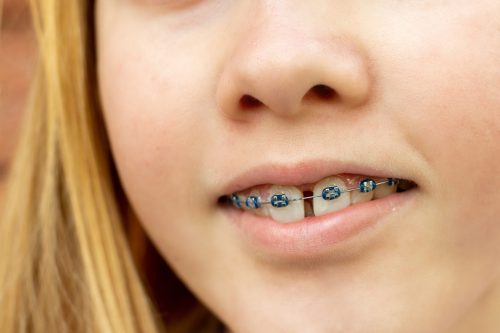Diastema is a condition that affects many individuals, characterized by a small gap or space between the upper front teeth. While this condition may seem cosmetic, it can have an impact on an individual’s oral health. In this blog post, we will explore what Diastema is, whom it affects, whether it is considered normal, and the impact it can have on oral health. We will also look at the symptoms of Diastema, Gum disease treatments for Diastema, the causes of Diastema, how Diastema is diagnosed, Cosmetic treatments for Diastema, and what treatment options are available.
- Diastema dental, also known as a gap between front teeth, is a common dental condition where there is a small space between the upper front teeth.
- The condition can vary in size, with some individuals having a tiny gap, while others may have a larger space.
- It is most commonly seen between the two upper front teeth, but it can also occur between other teeth.
- The medical Diastema definition is the distance between the mesiobuccal cusp of the maxillary first molar and the distobuccal cusp of the mandibular first molar.
Who Does Diastema Affect?


 4.7
4.7
Would you like to receive information about the operations from Vanity Doctors?
As Vanity, we can give you information about the operation you are considering.
Ask the DoctorDiastema is a condition that affects both children and adults. It is most commonly seen in children who are losing their baby teeth and gaining permanent teeth. This is because the size of the permanent teeth may not match the size of the baby teeth, resulting in a gap. However, it is not limited to just children; many adults also experience Diastema.
Is a Diastema Normal?
Diastema is a common dental condition and is considered normal in many cases. However, if the gap is large or causes discomfort, it may be considered abnormal. In some cases, Diastema is caused by genetics, but it can also be caused by other factors such as oral habits or malocclusion.
How Does Diastema Affect My Oral Health?
While Diastema is generally considered a cosmetic condition, it can have an impact on an individual’s oral health. A gap between the front teeth can trap food particles, which can lead to tooth decay or gum disease. In addition, Diastema can also affect the way an individual bites, which can cause discomfort or even jaw problems. In some cases, Diastema can also be a sign of other oral health issues such as gum disease or malocclusion.
What Are the Symptoms of Diastema?

The most common symptom of Diastema is the gap between the upper front teeth. However, some individuals may experience other symptoms such as tooth sensitivity or discomfort when biting. In some cases, Diastema may also be accompanied by other oral health issues such as tooth decay or gum disease.
What Causes Diastema?
Diastema can be caused by a variety of factors. Some of the most common causes of Diastema include genetics, oral habits, malocclusion, and tooth size. In some cases, Diastema may also be caused by certain medical conditions such as a cleft lip or palate.
How is Diastema Diagnosed?
Diastema is usually diagnosed during a regular dental check-up. Your dentist will examine your teeth and may take x-rays to determine the cause of the gap. They may also ask about your oral habits and medical history to get a better understanding of the condition.
How Do You Fix Diastema?
There are a variety of treatment options available for Diastema. The treatment option that is chosen will depend on the cause of the gap and the individual’s preference. Some of the most common treatment options include:
- Dental bonding: This is a cosmetic treatment where a tooth-colored material is applied to the teeth to fill the gap. This is a simple and non-invasive option that is ideal for small gaps.
- Orthodontics: Braces or clear aligners can be used to move the teeth and close the gap. This option is typically recommended for individuals with a larger gap or who also have other issues with their bite.
- Crowns or veneers: These are porcelain restorations that are custom-made to fit over the affected teeth. This option can be used to correct larger gaps and can also improve the overall appearance of the teeth.
- Gum surgery – Gum disease treatments for diastema: In some cases, the gap may be caused by an uneven gum line. Gum surgery can be performed to reshape the gums and close the gap.
- Splint therapy: A splint is a removable orthodontic device that can hold the upper jaw in place. It can be used as a treatment for gaps caused by jaw muscle imbalances.
It is important to note that orthodontic treatment can also be used to treat Diastema caused by bite disorder. This can be done by orthodontic devices to bring the upper and lower jaw in a proper position or with the help of clear aligners or braces.
Conclusion
In addition to the above treatment options, maintaining good oral hygiene, avoiding habits that can contribute to Diastema (e.g., thumb-sucking) and regular dental check-ups can help prevent Diastema from worsening.
In conclusion, dental Diastema is a common dental condition characterized by a gap between the upper front teeth. While the condition may seem cosmetic, it can have an impact on an individual’s oral health. If you have a gap between your front teeth, it is important to visit your dentist to determine the cause of the gap and the appropriate treatment option for you. With the help of the above treatments and preventative measures, you can fix the gap and maintain good oral health.
Another important aspect to consider when it comes to diastema is the psychological impact it can have on an individual. Having a gap between the front teeth can make some people self-conscious about their appearance and can affect their self-esteem and confidence. This is especially true for those who have a larger gap or who are in professions where appearance is important, such as acting or modeling.
That’s why, many people with diastema opt for cosmetic treatment options such as dental bonding, veneers, or crowns. These treatments can improve the appearance of the teeth and close the gap, which can help to boost an individual’s confidence and self-esteem.






